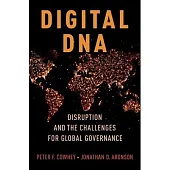Digital DNA
Digital DNA
Opis publikacji
Digital DNA identifies how the disruption of digital information and production technologies transforms how companies and national economies are innovating. Wisely guiding this transformation is an enormous challenge because innovation promotes global economic prosperity. Economic tensions and market surprises are inevitable. Part I reviews the challenges we face and argues that national and international policies require experimentation and flexibility to address them. The case studies in Part III probe issues tied to the rise of cloud computing and transborder data flows, international collaboration to reduce cybersecurity risks, and the consequences of different national standards of digital privacy protection. Significant diversity in individual national policies is inevitable, but an international baseline of policy fundamentals to facilitate “quasi-convergence” of national policies is needed. Moreover, expert multistakeholder organizations that facilitate the...
Digital DNA identifies how the disruption of digital information and production technologies transforms how companies and national economies are innovating. Wisely guiding this transformation is an enormous challenge because innovation promotes global economic prosperity. Economic tensions and market surprises are inevitable. Part I reviews the challenges we face and argues that national and international policies require experimentation and flexibility to address them. The case studies in Part III probe issues tied to the rise of cloud computing and transborder data flows, international collaboration to reduce cybersecurity risks, and the consequences of different national standards of digital privacy protection. Significant diversity in individual national policies is inevitable, but an international baseline of policy fundamentals to facilitate “quasi-convergence” of national policies is needed. Moreover, expert multistakeholder organizations that facilitate the implementation of formal government policies hold promise but should operate across national boundaries because the implications of digital technologies are global. Parts II and IV propose a strategy for using international regulatory and trade agreements to revamp the international governance regime for digital technologies. Better measures to safeguard digital privacy and cybersecurity can improve both market access and the welfare of users. A “Digital Economy Agreement” that embraces “soft rules” requiring governments to achieve certain objectives without specifying how, can achieve sufficient quasi-convergence of national policies for innovation to flourish. The political legitimacy and flexibility of international governance regimes likely will be better if multistakeholder organizations are involved in their negotiation.


